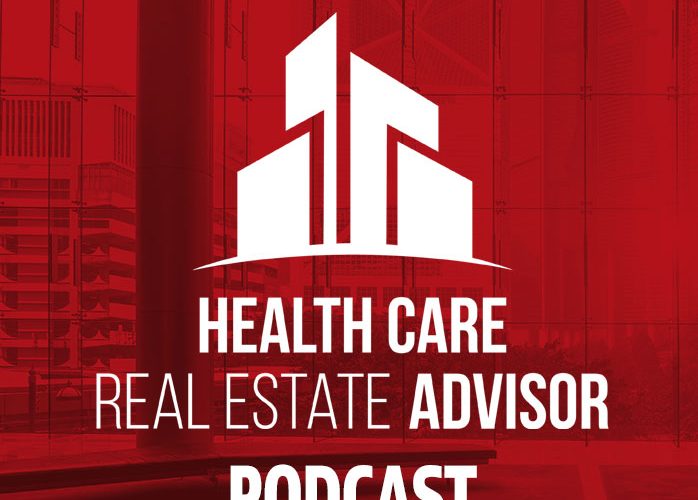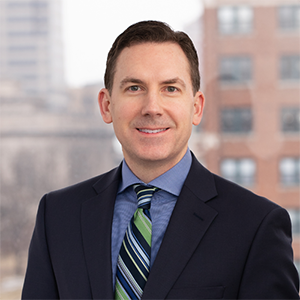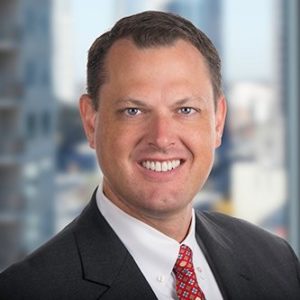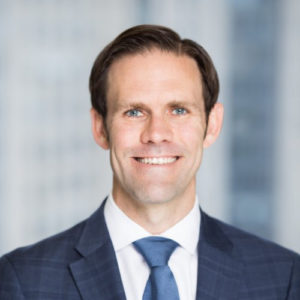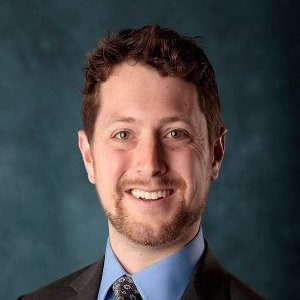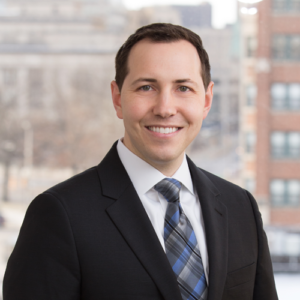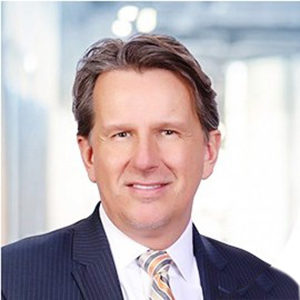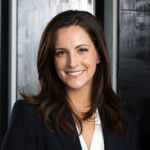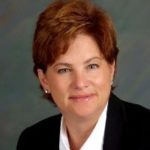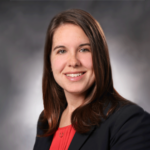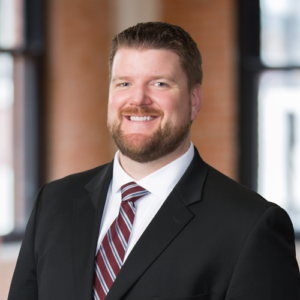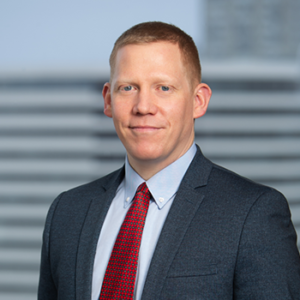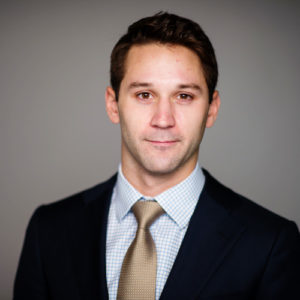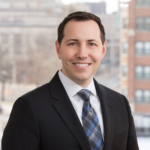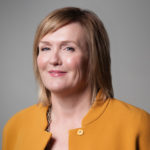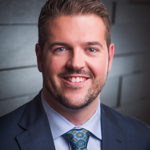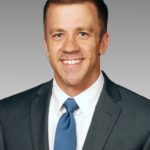An Interview with Tamia Kramer, AVP of Real Estate, Ardent Health Services
An Interview with Tamia Kramer, AVP of Real Estate, Ardent Health Services
In this interview, Andrew sits down with Tamia Kramer, to talk about her real estate career, building a centralized real estate function for Ardent Health Services and trends in the health care real estate industry.
Podcast Participants
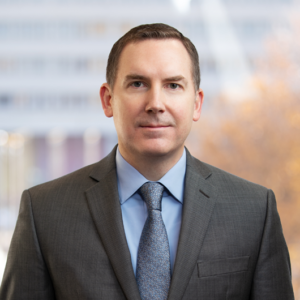
Andrew Dick
Attorney, Hall Render
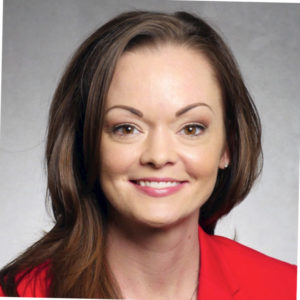
Tamia Kramer
AVP of Real Estate, Ardent Health Services
Andrew Dick: Hello and welcome to the Healthcare Real Estate Advisor Podcast. I’m Andrew Dick, an attorney with Hall Render, the largest healthcare-focused law firm in the country. Today we’ll be speaking with Tamia Kramer, the associate vice president of real estate at Ardent Health Services. Ardent is a national hospital and healthcare system that’s based in Nashville, Tennessee. We’re going to talk about Tamia’s background, Ardent Health Services and trends in the healthcare real estate industry. Tamia, thanks for joining me.
Tamia Kramer: Thanks for the invite, Andrew.
Andrew Dick: Tamia, before we talk about your role at Ardent, let’s talk about your background and tell us where you’re from and what you wanted to be when you pursued a professional career.
Tamia Kramer: So I’m from a little bit of everywhere. I was a military brat growing up, went to 14 different schools. I went to college in Texas. That’s actually where I lived for the 18 years before I moved to Nashville with Ardent. Went to college at Texas women’s university, and really knew that I was fueled at negotiation and analytical review of information and decided to pursue working within the real estate industry and start as a broker, but ended up taking my career down that path. And so I bring that level of experience to this role at Ardent.
Andrew Dick: Got it. And so when you worked in the commercial real estate industry, talk about your roles. I mean, it’s my understanding you were a commercial broker, you worked for a developer. Tell us a little bit about your experience.
Tamia Kramer: Yeah, so I started out working for an industrial real estate developer and kind of an administrative capacity and that really gave me a snapshot into the industry itself and the ins and outs. And let me begin to hone some of my negotiation and analytical skills. From there, I decided to double down on that career path and become a broker. Got my real estate license working for a local firm in Dallas. And the primary client that I had to start out with was a healthcare client. I actually worked on the corporate headquarters of the former Triad hospitals campus and managed all of their real estate transactions. And then as far as the developer piece of it goes, in addition to the brokerage side of things, I’ve also gotten some experience with build-to-suit type developments related to the expansion of some of those healthcare clients and specifically art and health as well.
Andrew Dick: Got it. And so at what point did you make the transition to Ardent, talk about that transition.
Tamia Kramer: Yeah, so I was working in-house for another healthcare company in 2017. Ardent reached out to me and was interested in centralizing some of their real estate functionality at the corporate office. At the time, the real estate functions were all on a case-by-case basis at the facility level. And so that led to either a lack of visibility or cohesiveness with our strategic plans. And there was a lot of benefit to giving that visibility to the leadership team at the corporate office. So I presented to the executive team, gave them a plan on how exactly we would go about centralizing the department. And at that point, they extended an offer to me. And I took that role in mid-2017.
Andrew Dick: And to me, it sounds like when you presented to the executive team, it was really to build out a real estate department, and so what does that mean? Talk about building out a centralized real estate department within a larger health system. That sounds like a heavy lift.
Tamia Kramer: Yes, very much so it was slow going at first, a little bumpy along the way. The first thing that you have to do in trying to stand up a real estate department that didn’t exist previously is getting your arms around what you currently have, and we had a lot of lease documents, but they weren’t in a centralized location, they were not all electronic. So a large part of what I did to start was just taking inventory of everything that we have and a baseline of where we’re at and then start the process of making sure that each of those agreements is compliant, it’s current, and try to add value wherever you can.
Tamia Kramer: Another function that we work to streamline and centralize is the billing and collection of all of our income leases. So what that means is sending out rent statements to any tenants that lease space from us and then collecting on those funds and reporting those down at the facility level. Previously, the hospitals each managed that locally and at the end of the day, if rent isn’t paid, that is a problem, not just from a business standpoint, but also a compliance standpoint. And so it has helped us to get in front of a lot of those issues, kind of create a standardized process of billing and collections and not letting anything get too far gone before it’s addressed.
Andrew Dick: Got it. And so you’ve been at Ardent for a number of years now and so what are some of the key takeaways? I mean, did you implement like a centralized technology database or how did it work when you started centralizing the real estate function?
Tamia Kramer: Yeah, we did. So we have a web-based platform that we use that holds all of our real estate leases. We are able to pull reports out of that system. We use that same system to build the income tenants, their rent, and any other amounts that are owed under the lease. We’ve created a site selection, an optimization system using various demographics and business intelligence data to help us determine where we want to be and why we want to be there. So that’s added a level of improvement to the locations that we decide to pursue. Rather than taking a wait-and-see approach and trial and error, we’re trying to get it right the first time where we can. So that has significantly helped. In addition, we’ve got a data room of various floor plans, schematics measurements that we have been able to collect over the last four years by engaging a firm, an architectural firm to help us remeasure all of our spaces to ensure that what we’re releasing is in fact accurate.
Andrew Dick: So Tamia, talk about, let’s transition and talk a little bit about strategy. So one of the big issues that healthcare providers face today in the real estate world is whether to own or lease their facilities. How do you approach those decisions and does Ardent have a certain perspective on whether to own or to lease?
Tamia Kramer: So it’s approached at the highest levels, we certainly want the local division leadership and the Ardent leadership to kind of be the driving force behind whether we decide to own or lease something. I will tell you that the historic approach is into lease property. Now that does not mean that we do not own property, we have a healthy amount of both, but we do have a preference to lease. And the reason for that preference is that it doesn’t tie up large capital sums of money in those hard assets that could otherwise be deployed into operational type functionality and also an expansion of our footprint and of our various healthcare activities and market.
Andrew Dick: And so let’s also talk about the impact of COVID, Tamia, so how is the impact of COVID changed the way you’re doing business on behalf of the health system?
Tamia Kramer: So we are always trying to be as smart as possible about the dollars that we spend, but COVID really made us focus even more on that and tried to leverage what we could in order to improve existing terms or close locations in favor of better locations. I’m sure a lot of other healthcare companies have gone through that same exercise. Now we’ve also, from a corporate office standpoint and an administrative space standpoint, we’ve been looking at how to better utilize the space that we have and ways that we can improve efficiencies.
Tamia Kramer: One thing that we have started looking at and we’ve implemented fairly recently is a hybrid type working environment where people are in the office 1, 2, 3 days a week, the rest of the week, they’re working remotely from home. That has enabled us through some creative exercises to potentially reduce our corporate office footprint by over 30%. We’re currently sitting in about 104,000 square feet and it looks as though we may be able to reduce that footprint down to about 75,000, still meet all of our needs, and actually improve efficiencies and collaboration across the board. And in that same approach is being used in each of our local markets as well to evaluate our use of administrative space and how much we in fact actually need.
Andrew Dick: Got it. So Tamia, when we talk about administrative office space, there are often strong feelings on behalf of the employees that use the space. Has there been any pushback from employees that like to have a traditional office, or how have your team members responded to this more hybrid approach?
Tamia Kramer: Before we implemented that, we actually distributed a survey to all of our staff and we asked them to weigh in on what they wanted the corporate office of the future to look like, what was important to them. And at that point, when we deployed the survey, we had already started working remotely for the most part because of COVID, because of all of the lockdowns and the restrictions and we didn’t have a cohesive hybrid working policy developed yet. And we weren’t sure if it was going to continue in the future. So to get a decent baseline of where exactly the future was going to be taking us, we deployed that survey and the survey came back with 73% of the staff wanted to work in some type of hybrid environment. That was pretty telling, only 11% of the respondents came back and said that they wanted to work in the office five days a week, which was, it was a little shocking to everybody that was reviewing the results.
Tamia Kramer: But that told us what we needed to know that with the changes that COVID brought around, we were better serving our employees by giving them a chance to work in the environment that they thrive in, whether that’s in an office without distractions from home or working from home if there aren’t any distractions at home. And so focusing on where someone thrives rather than just having somebody sit at a desk just to sit at a desk, it’s kind of, it’s been a culture change here at Ardent and I can tell you that from my perspective, I’m happier. I think I have a better work-life balance as a result and I think that that is probably the case with a lot of my colleagues. I will tell you that we are planning on doing a secondary survey just to test the waters again and make sure that what everybody thought they wanted, earlier in this year is actually working for them before we start making some long-term space reduction decisions.
Andrew Dick: Yeah, that’s interesting because it seems like each company has a little bit different response to those types of surveys, whereas, in the law firm world where I work, the attorneys always want an office and aren’t as flexible when it comes to giving up an office. But that’s interesting how Ardent approached it and how things are working out. So Tamia, let’s talk a little bit about trends in the industry. What are some of the bigger trends in the healthcare real estate industry that you’re noticing?
Tamia Kramer: So I am noticing more of an ambulatory strategy. That is where access points are at an increase and access points are the goal. People are looking for convenience, they’re looking for things close to their home. They don’t necessarily want to travel to an on-campus large acute care type facility and have to navigate all of the halls there just to get to a run-of-the-mill doctor’s appointment. And so we’re trying to increase those access points across most of our markets.
Tamia Kramer: I am seeing that that is an increasing trend. We’ve partnered with some Ardent care providers that are helping us meet that goal in several of our markets, specifically near Austin and Topeka, and several others. So I trend toward urgent care, I trend towards increased access points and also just making sure that any new developments that are created, they’re using the dollars as best they can. The construction cost is just through the roof right now, which is obviously increasing the cost of any real estate ownership and or leases associated with those developments. So just noticing a little bit more cost-consciousness across the industry as a whole.
Andrew Dick: And what about telehealth? Tamia seems like health systems have had a big increase in demand for telehealth services. Has that changed the way that you and your team operate?
Tamia Kramer: Absolutely. So I would say that we are starting to utilize portions in some of our clinics as a telehealth room, as a place where doctors can go in and have a dedicated area to conduct those telehealth visits. When in person visits aren’t possible, it’s definitely increased our volumes. Now we don’t, it doesn’t necessarily translate to more dollars but if we are able to get access to more patients, then that’s not a bad thing, even if we’re not necessarily seeing them in person, they’re getting the quality care that they need. And they’ll likely be come back to us for more care if they had a quality experience.
Andrew Dick: Yeah. I think that’s what I’m hearing from other providers as well. So talk about your young professionals who are getting started in the healthcare real estate business, what advice would you give to someone who’s new in the business that wants to learn as much as they can? What would you tell them?
Tamia Kramer: So I would say that healthcare real estate is a little bit of a different animal from typical commercial real estate. Mostly in that there are compliance parameters that you have to stay within in order to keep yourself out of trouble. And those don’t necessarily align with the typical, get the best deal for your client approach that you will typically see in commercial real estate. There have actually been some times that I have had to approach a landlord and ask them to increase my rent, because it was not fair market value any longer.
Tamia Kramer: And you typically won’t ever see anybody do that in commercial real estate. It’s get the best deal you can. The reason why we have to be careful with that in healthcare is you cannot give any type of incentive for any referral business. And if, for instance, we’re leasing space from a referral source and we are not paying them at least the fair market value for the rent, or more fair, more money, more than fair market value for the rent, then that could be construed as an incentive to refer. So it, I would say that go into it still with making the best financial deal possible at heart, but understanding that the most important thing to do is to actually stay within those compliance and regulatory bar rails.
Andrew Dick: Yeah, that’s right. I agree with you from, in the healthcare world, the regulatory environment is very different than in the traditional business world. So Tamia, this has been great. Where can the audience learn more about you and Ardent health services?
Tamia Kramer: So you can go on our website at ardenthealth.com. There are several links on that webpage that will navigate you through our health systems and our history where we started at, where we’re going. There’s also a link to careers and different news articles that are available that talk a little bit about what we do and our impact in the community. And I’m on LinkedIn so, I mean, I’m welcome to connect with anybody that wants to know a little bit more about what I do, a little bit about Ardent or just wants to talk about real estate.
Andrew Dick: Great. Well, thanks Tamia, this was a good conversation and thanks to our audience for listening on your Apple or Android device, please subscribe to the podcast and leave feedback for us. We also publish a newsletter called the healthcare real estate advisor to be added the list. Please email me at adick@hallrender.com.

